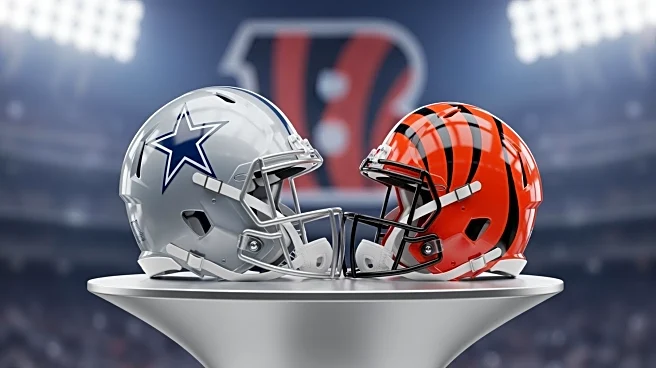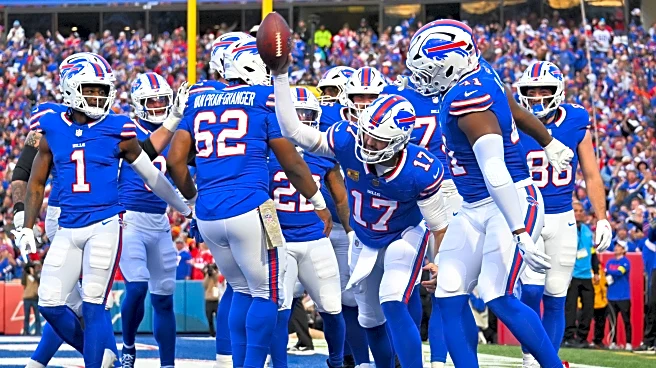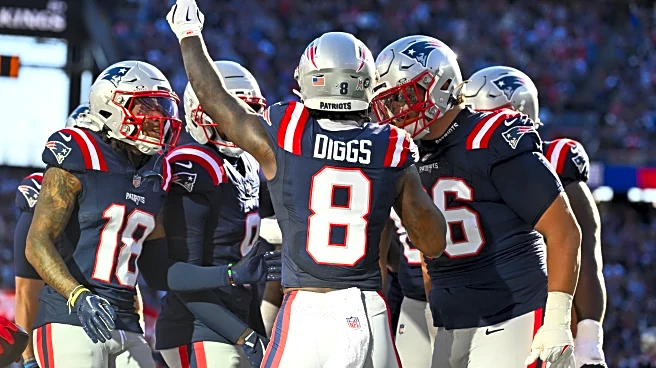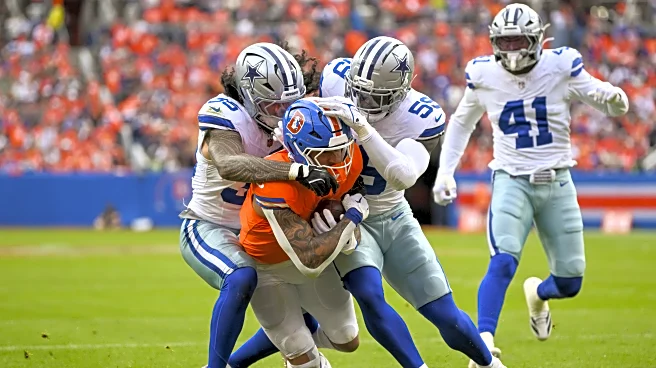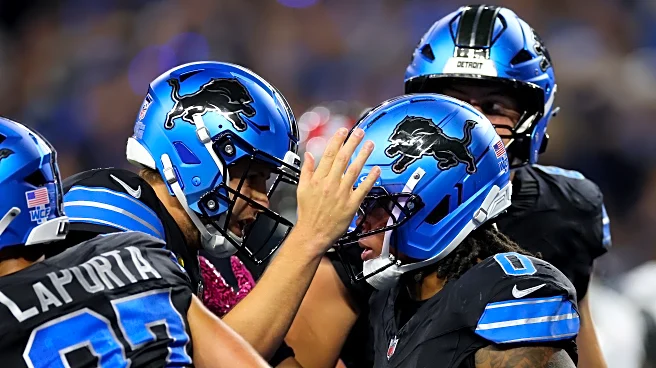What's Happening?
As the 2025 NFL trade deadline looms, teams across the league are categorizing themselves as buyers, sellers, or opting to remain inactive. The deadline, set for 4 p.m. ET on Tuesday, has prompted teams to evaluate
their current standings and future needs. The Dallas Cowboys, for instance, are actively seeking to bolster their defense, having already acquired linebacker Logan Wilson from the Cincinnati Bengals. Meanwhile, the Tennessee Titans are considering offers for key players like Jeffery Simmons, Calvin Ridley, and Chig Okonkwo as they aim to gather draft picks and build around their top draft pick, Cam Ward. The trade market is expected to be competitive, with only ten teams identified as sellers, potentially driving up the prices for acquiring talent.
Why It's Important?
The decisions made at the trade deadline can significantly alter the trajectory of a team's season and future prospects. For teams like the Cowboys, acquiring the right defensive talent could enhance their playoff chances, while the Titans' strategy to trade key players for draft picks indicates a focus on long-term rebuilding. The trade activities also reflect broader league dynamics, such as salary cap management and draft capital accumulation, which are crucial for maintaining competitive balance. Teams that successfully navigate the trade deadline can position themselves better for both immediate success and future growth, impacting fan engagement and financial performance.
What's Next?
Following the trade deadline, teams will need to integrate new players into their systems quickly to maximize their impact. For sellers, the focus will shift to developing younger talent and preparing for the upcoming draft. The outcomes of these trades will be closely watched by analysts and fans, as they could influence playoff races and set the stage for the next season. Additionally, the performance of traded players will be scrutinized to assess the success of these transactions.






